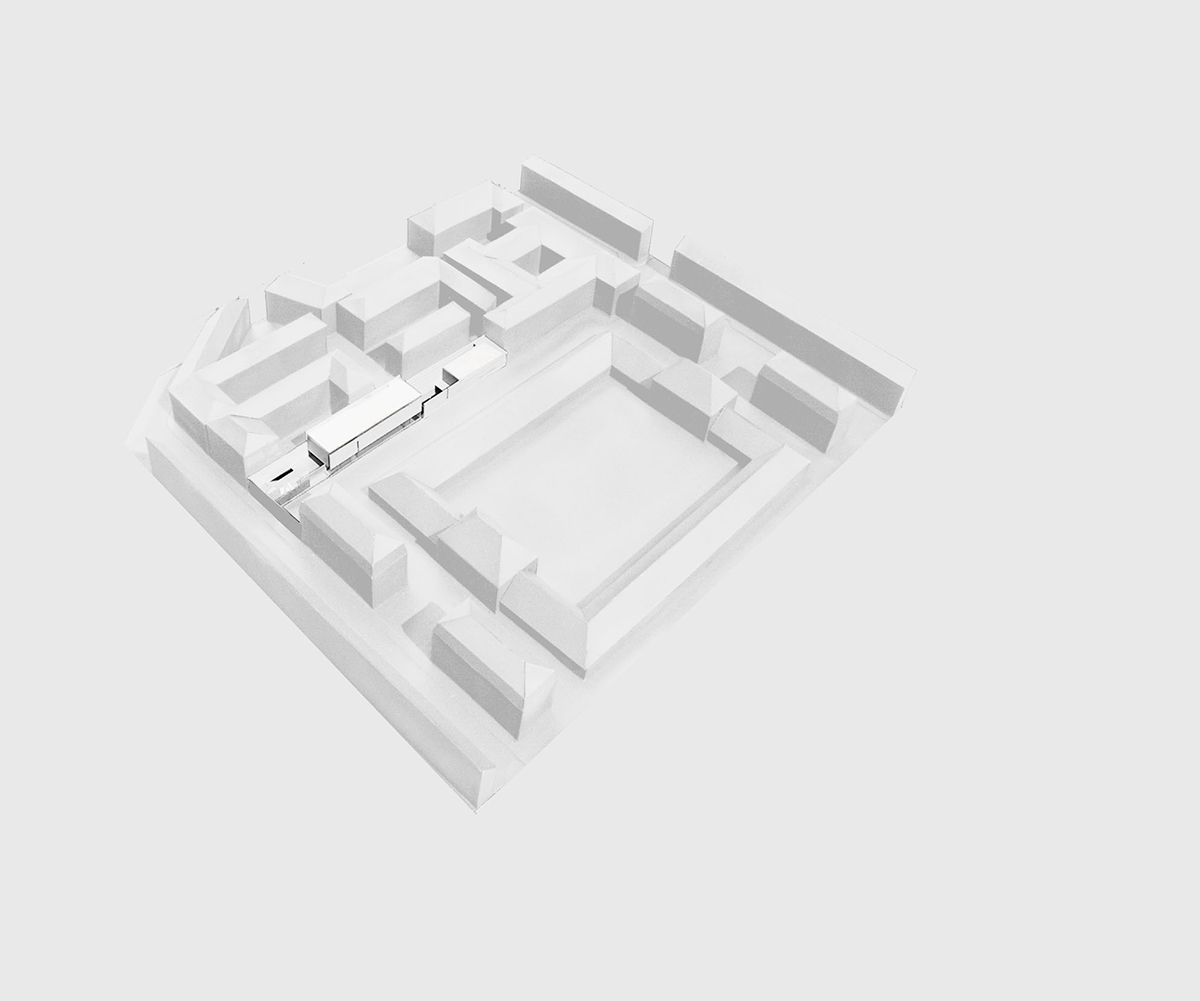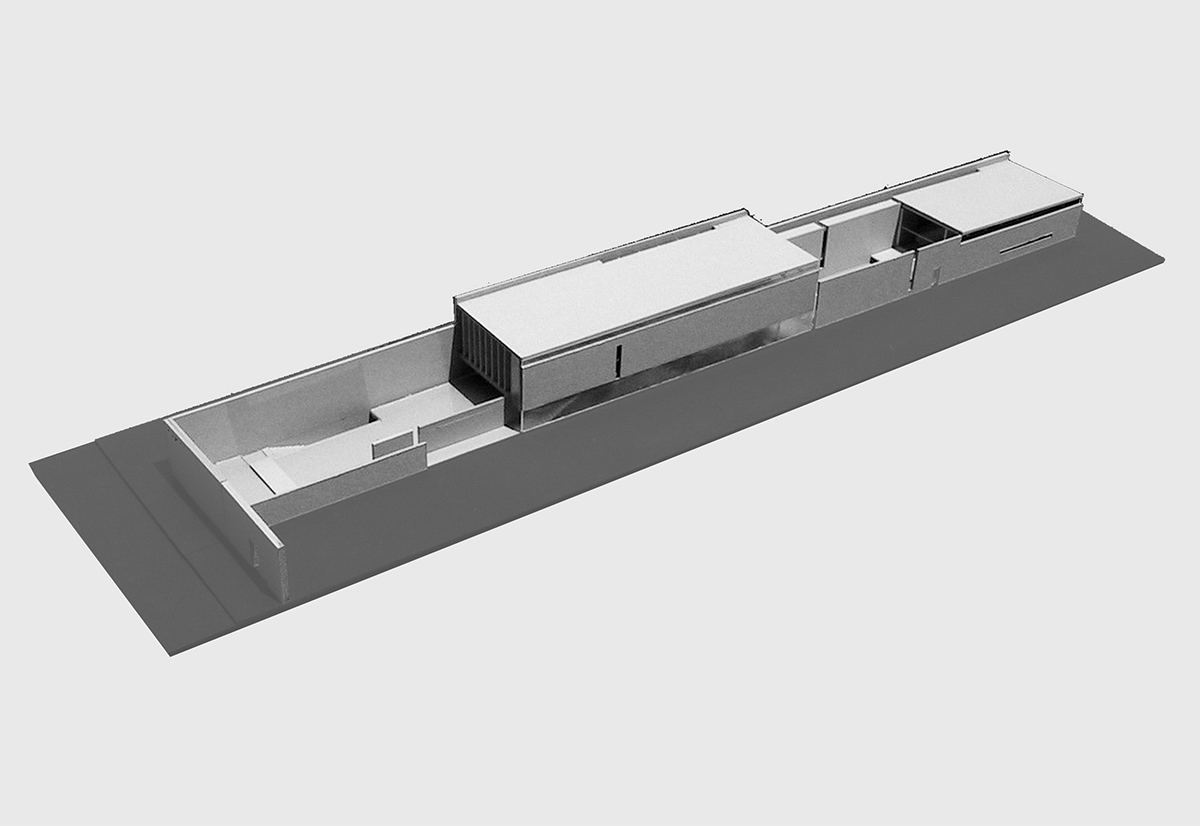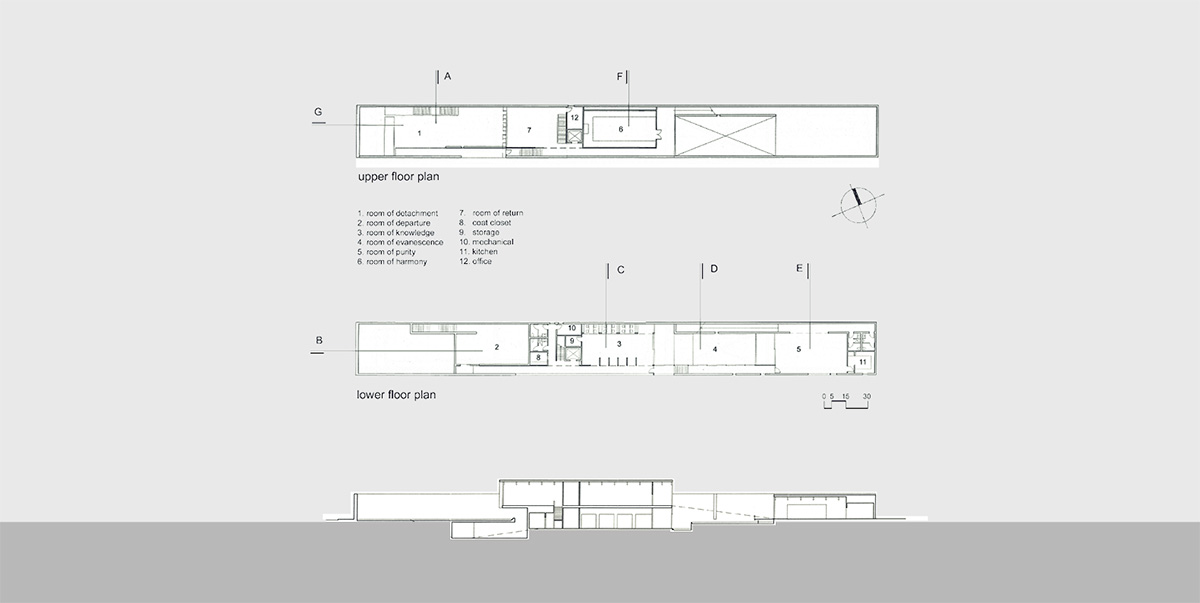Bredgade
Graduate thesis, 2001
Throughout western history, light has been recognized, discussed and designed as the most crucial part of architecture. Rarely mentioned on the other hand, is light’s companion, shadow. Light belongs to beauty and perfection while shadow pertains to mystery and sublimity. In Japanese culture, shadows are highly appreciated. As Junichiro Tanizaki writes,” we find beauty not in the thing itself but in the patterns of shadows, the light and the darkness, that one thing against another creates… if light is scarce then light is scarce; we will immerse ourselves in the darkness and there discover its own particular beauty.” 1 The tension between light and dark, where shadow belongs, offers an opportunity for spaces that not only satisfy visual delight but also evoke human imagination and spirit. A Museum of Zen is proposed to further explore this phenomenon. This museum is the place that people come not to see but to experience the beauty of nothingness. It is a void in which the present is celebrated through the absence of light, in the ephemeral shadows. It is the vacuity whose stillness is felt through movement of time. It is the place where people could fully experience the passing moments which lie at the heart of Zen principles.
1 Tanizaki, Jun’ichiro. In Praise of Shadows. Leete’s Island Books, 1977





